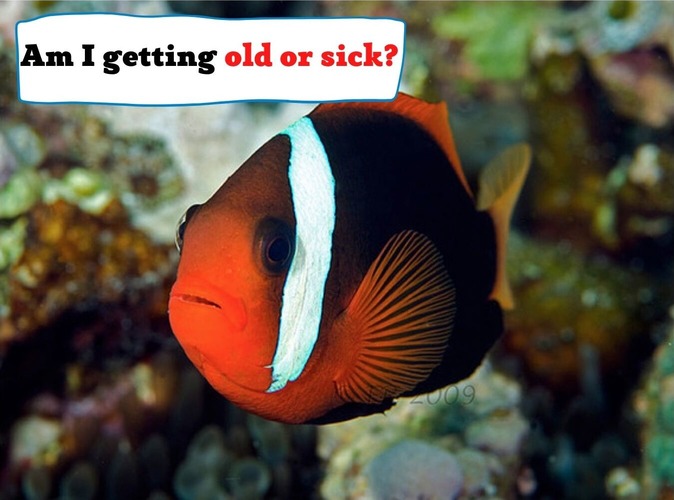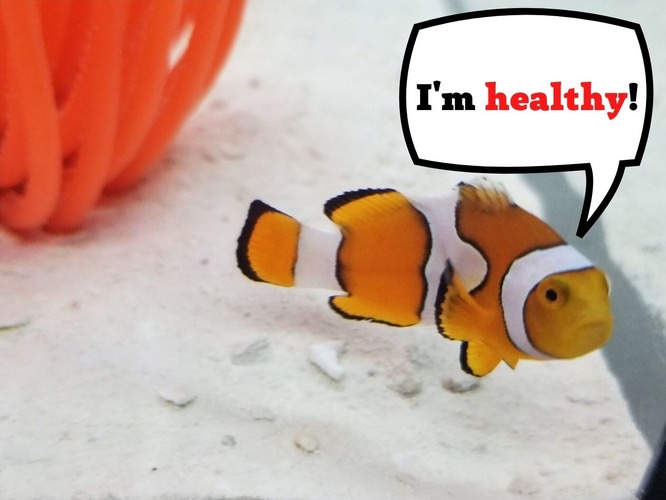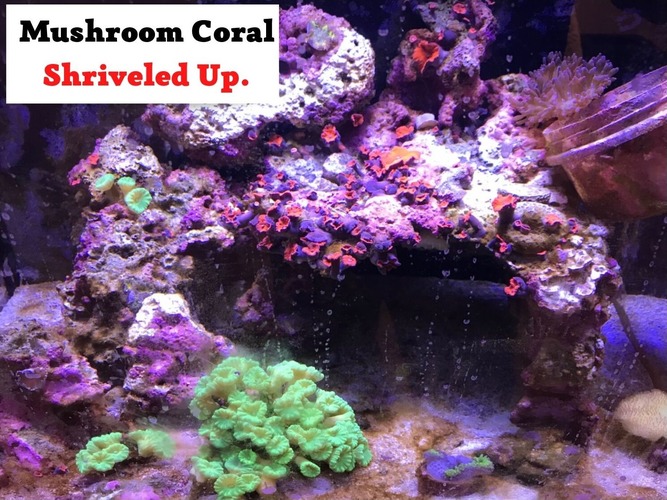
When you think of clownfish, you will usually think of brightly colored red, orange, or yellow fish with white and black bands. It’s their vibrant hues that usually entice aquarium hobbyists to this species in the first place! The brilliant color of clownfish is among its attractive features that draw the attention of aquarists. But what does it mean when the bright color of your clownfish begins to turn black?
This article reveals the two probable reasons your clownfish is turning darker. It also answers some other related questions about other implications of the color of your clownfish.
At the end of this post, you will know
- Why clownfish usually appear orange
- Whether all clownfish turn darker as a sign of aging or illness
- Whether the clownfish species affects its color
- Probable reasons your clownfish is losing color
- And how you can enhance the color of your clownfish
Let’s get started!
About Clownfish
Clownfish are saltwater reef dwellers in the Pomacentridae family. Like many other Pomacentridae, clownfish live in small groups and are territory with their coral or rock as the focus of their environment.
There are about thirty recognized species of clownfish, and they all have the characteristic of forming a symbiotic relationship with anemones.
Why Do Clownfish Appear Orange?
The predominant color of the many subspecies of clownfish is orange. This color is evidence of the symbiotic relationship between clownfish and anemones, whether in coral reefs or your tank. But other colors, including white and many more, usually form the stripes on the prominent orange hue to make the clownfish an attractive choice for aquarists.
Marine biologists suggest that the orange color of the clownfish is a caution sign to ward off potential predators. It seeks to remind them that the clownfish is a companion of the anemone, a deadly marine life with poison tentacles that it uses to neutralize predatory attacks.
Is My Clownfish Ill Because It Is Turning Black?
The answer to this question is NO. If your clownfish is turning black, that does not mean that it is sick. One of the most noteworthy ways of knowing when your pet clownfish is unhealthy is that it starts to turn lighter in color.
Indicators that your clownfish is sick include the following:
- Erratic swimming
- Inactivity
- Lightly stringy excrement
- Turning White and having its slime coat come off
How to know if my clownfish is healthy

The vibrant color of the clownfish is a sure indicator of good health. It is also proof that the slime coat of the clownfish will not come off as a consequence of discoloration.
Another determinant of a healthy clownfish is its consistent eating habit. A clownfish who is always reluctant to eat or has a bad feeding habit has health issues.
There are other signs of a sick clownfish but the clownfish turning black is not.
What if your clownfish is white?
If your clownfish turns to black gradually, you should have no cause for alarm. But if your clownfish begins to gather white spots around its gills, fins, or any other part of its body, the white hue may be a sign that your clownfish is dealing with a disease.
Usually, clownfish have some stripes of white or a few segments of their bodies, splitting orange color. But when the fish skin seems to be talking off with excessive white mucus-forming around the affected parts, your clownfish is likely suffering from Booklynella disease. It is the most visible sign of Clownfish disease or Brooklynella, a disease caused by a parasite called Brooklynella Hostilis, which plagues marine fish.
The parasite attacks and causes severe damage to the gills of the clownfish. The clownfish may experience irregular breathing, congestion of the gills, or other symptoms like the peeling off of its skin. This parasite reproduces by binary fission, and its spreading process speeds rapidly, making it highly contagious. It is a lethal disease as it can kill your pet clownfish in a few days.
How to treat Brooklynella
So far, Formalin, a formaldehyde solution with added methanol for stability, has proved to be the most efficient cure for this disease. Although Formalin is a potent chemical and must be used with caution, you have to make a standard formalin solution in a separate container at a higher concentration to treat this disease with Formalin. Give all the fish a quick dip in the solution at that higher concentration. After that, continue the treatment in a long bath of Formalin at a lower concentration. This should be done in a separate tank where the fish can be quarantined. Longer exposure to the formalin solution will effectively fight off the disease.
Do All Clownfish turn darker with age?
Not all clownfish turn darker with age. Color is mainly affected by the species of the clownfish. Some species are notorious for having a darker color as they grow older. One notorious species that eventually grows darker hue is the Ocellaris clownfish. These clownfish are mainly black with white bands, and they belong to the Amphiprion Ocellaris species.
Another species that exhibits darker colors over time is the onyx clownfish, also known as the Percula clownfish (Amphiprion percula). This darker pigment of hue may not be visible in the early age of the clownfish, but with time, it gradually manifests. They usually keep some orange color around their tails and heads while turning to a darker color in the middle part of their bodies. Both the Amphiprion Ocellaris and the Amphiprion percula are of the Percula complex.
This darker pigment of hue may not be visible in the early age of the clownfish, but over time, it gradually manifests.
But clownfish can live for more than 10 years, so a darker color is not sufficient to tell that the clownfish is aging.
Another reason clownfish may turn darker is to use its female reproductive organs. Clownfish are protandrous hermaphrodites. This means that although each clownfish matures as male, they may reproduce later in life as females. This is the peculiarity of clownfish because they carry both male and female reproductive organs. The clownfish’s skin usually darkens as it grows older to become female for reproductive purposes.
Why Is My Clownfish Losing Color?

Vibrance of color is the usual trait of a healthy clownfish. Color loss is a common consequence of bad health. If you notice that your clownfish is losing color, there are many reasons that you need to check out.
Nutrition
Nutrition plays a vital role in the color of your clownfish. Although clownfish diets usually consist of algae, worms, small crustaceans, and zooplankton, pet stores are often in the habit of feeding specially manufactured color-enhancing feed to tank-raised clownfish. If you do not keep up with this type of food, your clownfish will lose its brilliant colors gradually.
Also, nutrient deficiency may be another reason for the loss of color of your Clownfish. Varying or introducing a blend of flakes, pellets, and mysis for omnivores may also help bring back that vibrant color.
Habitat Parameters
This factor consists of water condition, pH level, oxygen, and ammonia levels. The appropriate water condition for a clownfish is 72 to 78 degrees F. They require saltwater since they are saltwater fish. This means you must ensure the proper salinity level for clownfish in your tank: 1.020-1.025.
The pH level of the water must be between 7.8 and 8.4 to keep them healthy and allow them to pair well with other species of marine life such as dwarf and large angelfish, blennies, gobies, hawkfish, pseudochromis, puffers, tangs, and some wrasse. Keeping them together with anemones and providing rocks and plants for hiding is also advisable.
Aquarium Maintenance Routine
Ensure to check the temperature, pH level, gravity, and filter daily. Regularly check the water quality in the tank at least once every 5-7 days.
Every 28 – 30 days, change about 10%-30% of the total volume of water. You may have to do this earlier than 28 days if there is a need to.
When introducing a new fish, do it gradually.
Bottom line
A darker coloring of your clownfish is more likely an indication of its species. It does not mean that your clownfish is sick or aging. A gradual darker shade is not conclusive proof of how old your clownfish is.
Maintaining a healthy tank with the proper water conditions and feeding them nutrient-enriched food will significantly affect the vibrance of their color positively.
You can feed your clownfish food that contains astaxanthin or carotene. This will make their colors brilliant. You can also provide them vegetables that are healthy sources of nutrients, such as spinach and broccoli, in bit sizes.
These are guaranteed to keep your clownfish healthy and glowing with brilliant colors.
- Snail Mantle Collapse – Here’s What Every Pet Owner Should Know - April 2, 2023
- Algaefix Killed My Fish – What Have I Done Wrong? - March 2, 2023
- How Long Can Live Rock Be Out of Water? And What Will Happen Then? - February 2, 2023




